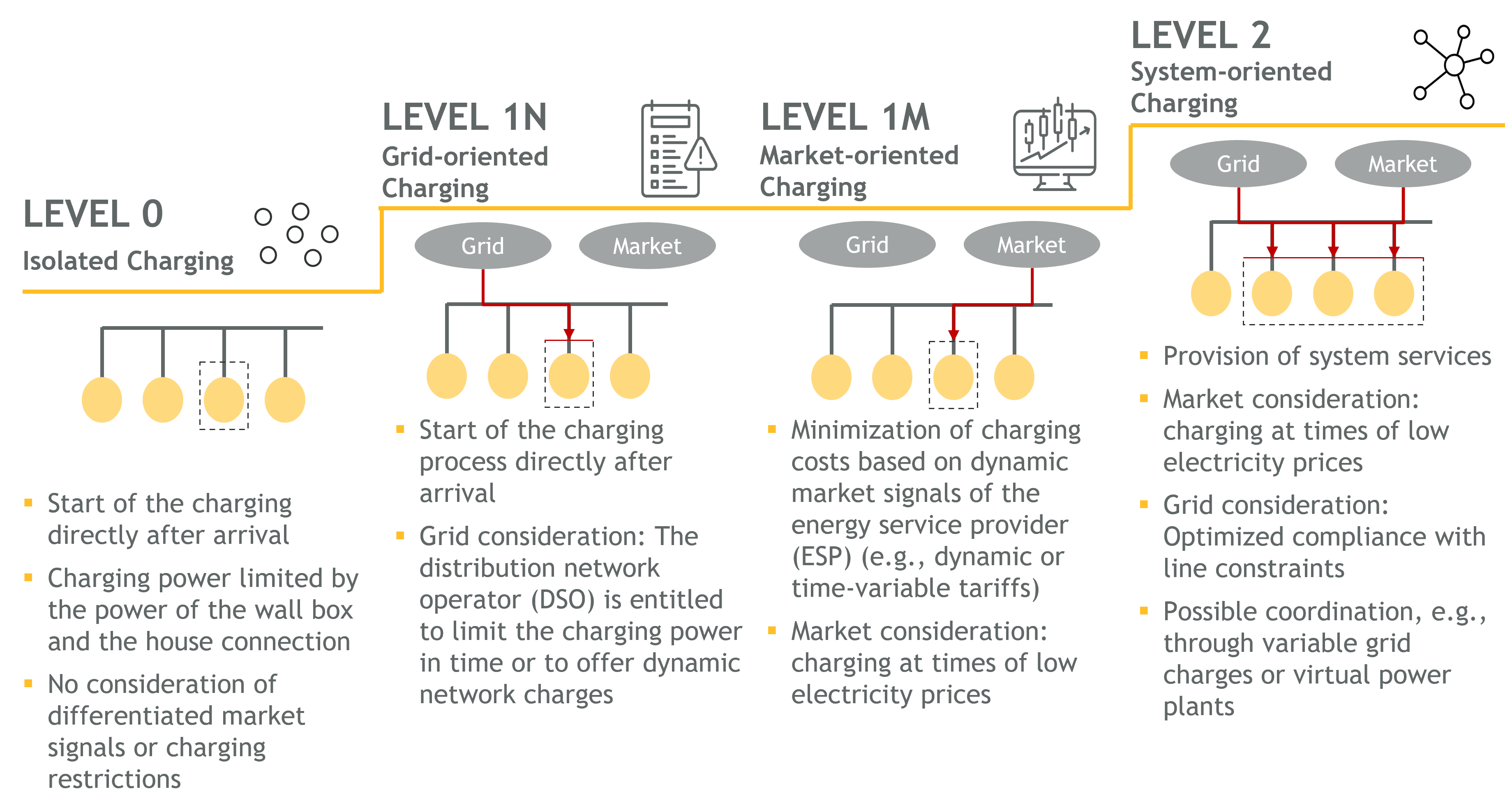
The ongoing electrification of the heating and transport sectors makes grid bottlenecks in distribution grids more likely. This could make it necessary to expand the grids – unless existing flexibility in consumption and generation can be utilized. In order to leverage this flexibility potential, coordination mechanisms are required to make signals of scarcity from the electricity market and the power grid transparent. For example, intelligent charging of electric vehicles could reduce the need to expand distribution grids, even with significantly more electric vehicles.
This is the conclusion reached by the Institute of Energy Economics at the University of Cologne (EWI) in its new short study “Decentralized Coordination – Effects of Different Charging Concepts for Electric Vehicles on the Market and the Grid”, funded by the Association for the Promotion of the Institute of Energy Economics at the University of Cologne.

In the short study, a team from the EWI examined different coordination mechanisms using the example of charging processes for electric vehicles. For this purpose, EWI researchers Dr. Johannes Wagner, Nils Namockel and Arne Lilienkamp coupled an electricity market model and a grid model. With the coupled models, the EWI team compared four different charging concepts:

The analysis shows that the electric vehicle ramp-up does not necessarily lead to grid bottlenecks even under the status quo (uncontrolled/isolated charging). Still, the probability of grid bottlenecks increases in this case.
Grid-oriented charging, for example, in the form of time windows with power limits for wall boxes, can limit peak loads. However, the approach can lead to inefficiencies if the charging processes are regulated across the board and not in line with demand, meaning that the existing infrastructure is not used optimally.
Market-based charging through variable electricity tariffs that reflect the current wholesale price can help reduce household charging costs while increasing the share of renewable energy in charging electricity. Offering variable electricity prices is thus both in the interest of utilities because it helps smooth procurement profiles and in the interest of end-users, who can charge at lower prices. Variable electricity prices increase the attractiveness of electromobility and can thus make an essential contribution to the transformation of transport in Germany. Simple so-called time-of-use tariffs can be a start to increasing flexibility here.
However, variable electricity prices can significantly increase the peak load compared to uncontrolled la-ding due to herd behaviour. This can favour the occurrence of bottlenecks in the distribution network. Optimally combining grid and market signals and exploiting the flexibility potential of charging processes, so-called system-oriented charging, can avoid bottlenecks in the distribution grid and reduce charging costs.
“In principle, the existing flexibility potential of charging processes can be used to avoid grid bottlenecks – and thus also reduce expensive grid expansion,” says Nils Namockel. This applies in principle to the advanced approach of system-oriented charging, which takes into account market and grid signals, and to purely grid-oriented approaches such as a flat-rate power limitation. Both approaches can avoid grid congestion without restricting mobility behaviour in the underlying analysis.
“However, there are still hurdles to successful implementation”, the authors say. While the implementation hurdles for integrating market signals are more of a technical nature (e.g., delaying the smart meter rollout), there are additional regulatory hurdles to overcome concerning grid signals. For example, there is no regulatory basis for using suitable concepts to encourage grid-serving behaviour in the case of controllable consumption devices (e.g., electric cars). “Section 14a of the German Energy Industry Act (EnWG), which addresses controllable consumption devices in the low-voltage sector, would have to be reformed.”